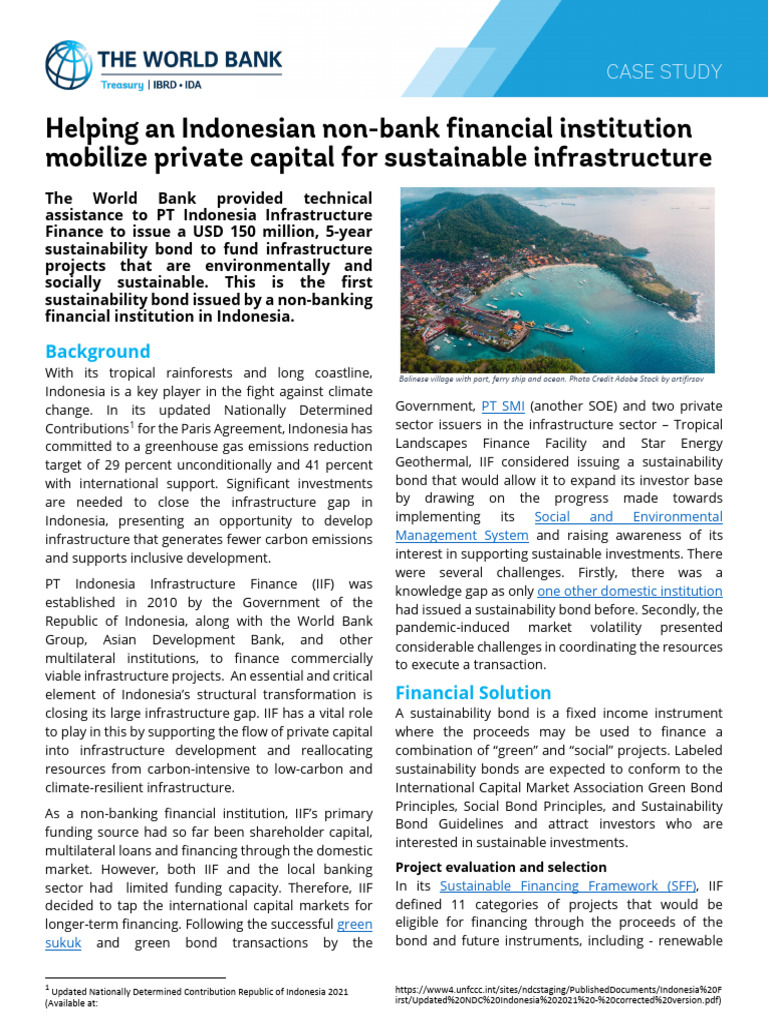Infrastructure Finance

Infrastructure finance is a multifaceted topic that encompasses the strategies, mechanisms, and considerations for funding large-scale projects that form the backbone of society's functionality. From transportation systems and energy grids to water treatment plants and public facilities, infrastructure projects require substantial financial resources and careful planning to ensure they are sustainable, efficient, and beneficial to the communities they serve. This blog post delves into the various aspects of infrastructure finance, exploring the different financing models, the stakeholders involved, and the challenges and opportunities that arise in this sector.
Types of Infrastructure Financing

- Public Finance: Traditionally, infrastructure projects were financed through public funds, often supported by national or municipal tax revenues. Governments issue bonds to raise capital, which is then invested in building highways, schools, and public hospitals.
- Private Finance Initiative (PFI): Here, private companies undertake to finance, build, and operate infrastructure projects, often returning ownership back to the government after a specific period. PFI can lead to innovation in construction and operations, but it also comes with its own set of risks, particularly related to contract terms and future cost overruns.
- Public-Private Partnerships (PPP): Combining public and private resources, PPPs aim to share both risks and rewards. This model is increasingly popular, as it allows governments to leverage private sector efficiency while sharing financial burdens.
- Blended Finance: This involves using public or philanthropic funds to mobilize additional private capital into projects, reducing investment risk for private investors through various financial instruments or guarantees.
- Green Bonds: Aimed at environmentally friendly projects, green bonds are gaining traction as a sustainable financing mechanism, helping to fund renewable energy projects, energy efficiency upgrades, and sustainable transport.

The Stakeholders in Infrastructure Finance

- Government: Responsible for policy, planning, and regulation. Governments also often provide the initial funds or take on significant debt to support infrastructure.
- Private Investors: These include institutional investors like pension funds, insurance companies, and banks, which invest in infrastructure due to its long-term, stable returns.
- Multilateral Development Banks (MDBs): Institutions like the World Bank or Asian Development Bank play critical roles in financing and advising on large-scale infrastructure, especially in developing countries.
- Local Communities: As users and direct beneficiaries of infrastructure, local communities must often be involved in the planning process to ensure the projects meet their needs and garner public support.
Challenges in Infrastructure Finance

- Fiscal Constraints: Public budgets are often stretched thin, making it difficult for governments to fund all necessary infrastructure without increasing taxes or debt.
- Political Risk: Changes in government or policy can disrupt long-term projects, causing investor hesitancy.
- Environmental and Social Impact: Balancing economic growth with sustainability goals is crucial, particularly as public awareness of environmental issues grows.
- Technical Complexity: Infrastructure projects are inherently complex, involving numerous technical, legal, and financial intricacies.
- Long-Term Investment Horizon: Infrastructure has long gestation periods, requiring long-term investment which can be at odds with the investment horizon of many private funds.
Opportunities in Infrastructure Finance

- Technological Innovations: New technologies like smart cities, IoT for infrastructure management, and energy-efficient building materials offer both new opportunities for investment and operational improvements.
- Asset Recycling: Governments can sell or lease existing infrastructure assets to fund new developments, providing a revenue stream for private investors.
- Sustainability Finance: With a push towards sustainability, there’s an increasing market for funding projects that contribute to reducing carbon footprints or improving living standards.
- Global Market Expansion: Emerging markets are increasingly opening up, offering new geographical areas for investment.
The key to overcoming these challenges and seizing opportunities lies in the careful structuring of financial deals, robust risk assessment, and fostering a collaborative environment between public and private sectors. Infrastructure finance is not merely about raising funds but about ensuring the projects funded are resilient, user-friendly, and aligned with broader economic, social, and environmental objectives.
What is the difference between PFI and PPP?

+
The Private Finance Initiative (PFI) focuses on private sector financing of public infrastructure with a focus on construction and operation. Public-Private Partnerships (PPP) are broader, encompassing not just finance but also shared responsibilities in design, development, operations, and often policy formulation.
Why do governments often prefer PPPs for infrastructure projects?

+
Governments prefer PPPs as they can provide access to private capital, expertise in management and operation, and risk sharing. This model can lead to cost efficiencies, innovation, and better project management.
How does environmental sustainability impact infrastructure finance?

+
Environmental sustainability now plays a crucial role in how infrastructure projects are financed. Investors and funders are more likely to support green infrastructure projects, driving the demand for sustainable investment opportunities and sometimes reducing financing costs through incentives like green bonds.
Related Terms:
- Infrastructure fund
- Indonesia Infrastructure Finance alamat
- IIF
- Infrastructure Indonesia